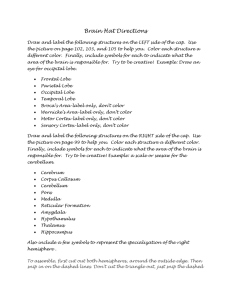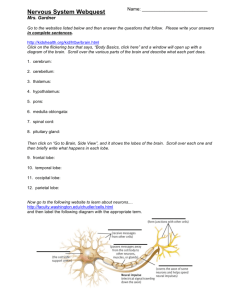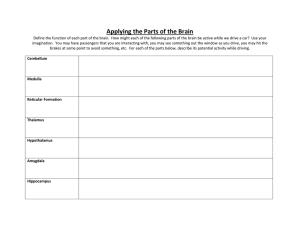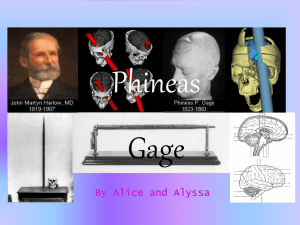File
advertisement
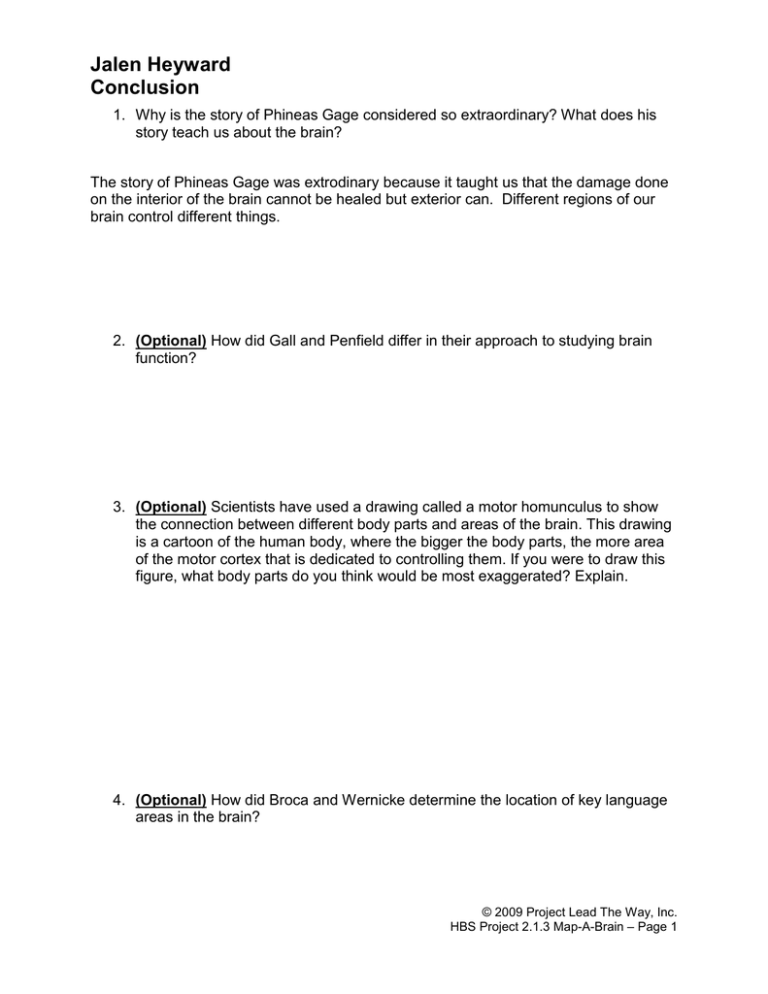
Jalen Heyward Conclusion 1. Why is the story of Phineas Gage considered so extraordinary? What does his story teach us about the brain? The story of Phineas Gage was extrodinary because it taught us that the damage done on the interior of the brain cannot be healed but exterior can. Different regions of our brain control different things. 2. (Optional) How did Gall and Penfield differ in their approach to studying brain function? 3. (Optional) Scientists have used a drawing called a motor homunculus to show the connection between different body parts and areas of the brain. This drawing is a cartoon of the human body, where the bigger the body parts, the more area of the motor cortex that is dedicated to controlling them. If you were to draw this figure, what body parts do you think would be most exaggerated? Explain. 4. (Optional) How did Broca and Wernicke determine the location of key language areas in the brain? © 2009 Project Lead The Way, Inc. HBS Project 2.1.3 Map-A-Brain – Page 1 5. (Optional) Describe one method scientists are currently using to map the function of the human brain. 6. New research is using functional MRI (magnetic resonance imaging), a scan of the brain that shows specific areas that are activated during certain tasks, as a lie detector test. Explain which area(s) of the brain you think might light up to show that you are telling a lie or telling the truth. Explain your reasoning. The frontal lobe would be involved in the process of lying or truth telling because controls thought process and decision making. 7. Explain the function of the brain’s limbic system. The brains limbic system regulates the memory and emotion of a human being. It connects higher and lower brain determination and also shows mood. © 2009 Project Lead The Way, Inc. HBS Project 2.1.3 Map-A-Brain – Page 2 8. Return to the first paragraph of Activity 2.1.2: Build-A-Brain and re-read the description of your morning activities. Use your map to determine the part of the brain responsible for each of the actions, thoughts or emotions that occur in this paragraph. Either re-write the paragraph and add brain regions in () after each activity or simply list the actions and write the brain region next to it. 9. Ten-year-old Alex Fuentes damaged his occipital lobe and his cerebellum in a car accident. Explain to his parents some of the possible effects of this injury. Since his occipital lobe is damaged his eyesight would be blurred and potentially gone. The occipital lobe causes our visual perception of things. Alex can have very little eye sight, hallucination, headache, and severe pain. © 2009 Project Lead The Way, Inc. HBS Project 2.1.3 Map-A-Brain – Page 3


